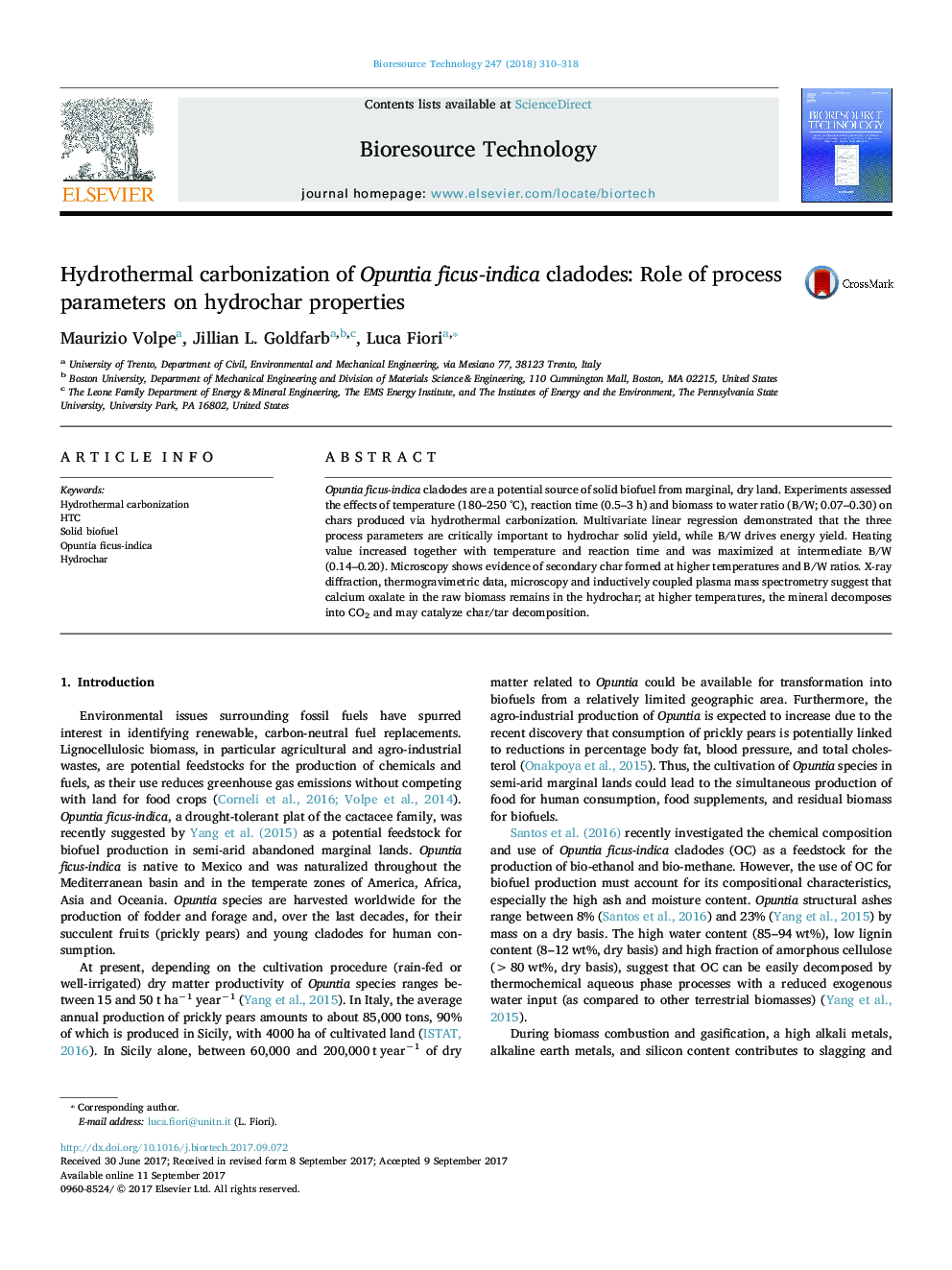| Article ID | Journal | Published Year | Pages | File Type |
|---|---|---|---|---|
| 4996653 | Bioresource Technology | 2018 | 9 Pages |
â¢Opuntia ficus-indica cladodes possible hydrothermal carbonization biomass feedstock.â¢Multivariate linear regression demonstrates impact of process variables on yields.â¢Solid yield and secondary char depend on temperature, residence time, biomass:water.â¢Hydrochar HHV maximal and volatile matter minimal at intermediate biomass:water.â¢Calcium oxalate in biomass remains in char, gasifies it at high temperature.
Opuntia ficus-indica cladodes are a potential source of solid biofuel from marginal, dry land. Experiments assessed the effects of temperature (180-250 °C), reaction time (0.5-3 h) and biomass to water ratio (B/W; 0.07-0.30) on chars produced via hydrothermal carbonization. Multivariate linear regression demonstrated that the three process parameters are critically important to hydrochar solid yield, while B/W drives energy yield. Heating value increased together with temperature and reaction time and was maximized at intermediate B/W (0.14-0.20). Microscopy shows evidence of secondary char formed at higher temperatures and B/W ratios. X-ray diffraction, thermogravimetric data, microscopy and inductively coupled plasma mass spectrometry suggest that calcium oxalate in the raw biomass remains in the hydrochar; at higher temperatures, the mineral decomposes into CO2 and may catalyze char/tar decomposition.
